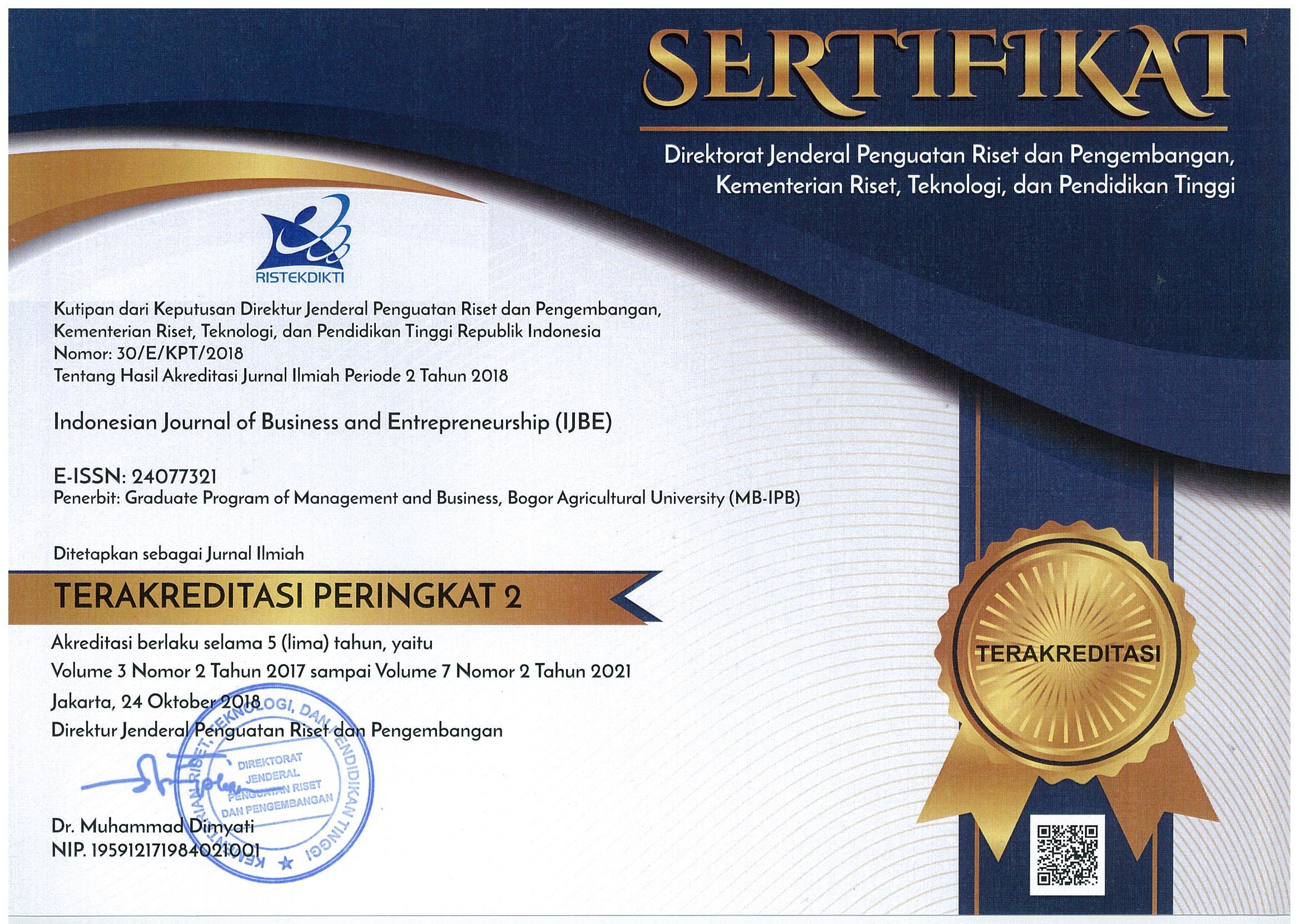Management of Supply Chain Risk in Cattle Slice Fattening at PT. Catur Mitra Taruma
Abstract
PT Catur Mitra Taruma is one of the cattle fattening companies having a role as a source of beef cattle inventory for the beef processing industry. However, this company has the potential to experience a variety of supply chain risks that can hamper the company's business processes in carrying out its operational activities. The purpose of this study is to identify and analyze the risks that potentially appear in the process of supply chain beef cattle at PT. Catur Mitra Taruma, asses and evaluate identified risks, and formulate priority risk of mitigation and risk of chain action. The identification of supply chain risk was done using the dimensions of Supply Chain Operation Reference (SCOR). The method used in this study was the House of Risk method, an analysis that aims to identify and prioritize the source of risk for effective mitigation measures to minimize the potential risk and the source of existing risks. The identification results showed that the source process had the greatest risk of a total of 29 identified risk events in the company. In addition, there were 13 priority risk sources based on the ranking order of the priority risk index (ARP), rating of the total of 45 identified risk sources in the company. From the results of risk management analysis, there are recommendations of 10 priority risk mitigation actions that can be applied in PT. Catur Mitra Taruma in a potential supply chain risk prevention action in the company.
Keywords: supply chain, supply chain risk, risk management, House of Risk, cattle fattening business
Downloads
References
Ahmad RZ. 2008. Pemanfaatan cendawan untuk meningkatkan produktivitas dan kesehatan ternak. Jurnal Litbang Pertanian 27(3): 1–9.
Aini H, Syamsun M, Setiawan A. 2015. Risiko rantai pasok kakao di Indonesia dengan metode analytic network process dan failure mode effect analysis terintegrasi. Jurnal Manajemen & Agribisnis 11(3): 209–219.
Anggrahini D, Karningsih PD, Sulistiyono M. 2015. Managing quality risk in a frozen shrimp supply chain: a case study. Procedia Manufacturing 4:252–260.https://doi.org/10.1016/j.promfg.2015.11.039.
An-nisa NS, Rizal S, Gendut S. 2015. Strategi pengembangan asuransi ternak sapi. Jurnal Manajemen & Agribisnis 12(1): 27–35. https://doi.org/10.17358/JMA.12.1.27.
[BPS] Badan Pusat Statistik. 2016. Statistik Pertanian 2016. Jakarta: Badan Pusat Statistik.
Chen JK. 2007. Utility priority number evaluation for FMEA. Journal of failure analysis and Prevention 7(5): 321–328. https://doi.org/10.1007/s11668-007-9060-2.
Chen J, Amrik SS, Daniel IP. 2013. Supply chain operational risk mitigation: a collaborative approach. International Journal of Production Research 51(7): 2186–2199. https://doi.org/10.1080/00207543.2012.727490.
Dewi DS, Syairudin B, Nikmah EN. 2015. Risk management in new product development process for fashion industry: case study in hijab industry. Procedia Manufacturing 4: 383–391. https://doi.org/10.1016/j.promfg.2015.11.054.
Firdausi A, Susilawati T, Nasich M, Kuswati. 2012. Pertambahan bobot badan harian sapi brahman cross pada bobot badan dan frame size yang berbeda. Jurnal Ternak Tropika 13(1):48–62.
Geraldin LH, Pujawan, IN, Dewi DS. 2007. Manajemen risiko dan aksi mitigasi untuk menciptakan rantai pasok yang robust. Jurnal Teknologi dan Rekayasa Teknik Sipil (TORSI) 2007: 53–64.
Handayani DI. 2014. Risiko rantai pasok minuman sari apel dalam perspektif sistem traceability. TI UNDIP: Jurnal Teknik Industri 9(1): 57–68. https://doi.org/10.12777/jati.9.1.57-68.
Hartini S. 2012. Peran inovasi: pengembangan kualitas produk dan kinerja bisnis. Jurnal Manajemen dan Kewirausahaan 14(1): 83–90. https://doi.org/10.9744/jmk.14.1.83-90.
Pujawan IN, Geraldin LH. 2009. House of risk: a model for proactive supply chain risk management. Business Process Management Journal 15(6): 953–967. https://doi.org/10.1108/14637150911003801.
Pujiastuti L. 2015. Stok Sapi Feedlotter. https://finance.detik.com/berita-ekonomi-bisnis/d-2990618/stok-sapi-feedloter-170000-ekor-di-akhir-juli-ini-data-rincinya [13 Januari 2017].
Risqiyah IA, Santoso I. 2017. Risiko rantai pasok agroindustri salak menggunakan fuzzy FMEA. Jurnal Manajemen & Agribisnis 14(1):1–11. https://doi.org/10.17358/jma.14.1.1.
Ulfah M, Maarif MS, Sukardi, Sapta R. 2016. Analisis dan perbaikan manajemen risiko rantai pasok gula rafinasi dengan Pendekatan house of risk. Jurnal Teknologi Industri Pertanian 26(1): 87–103.







